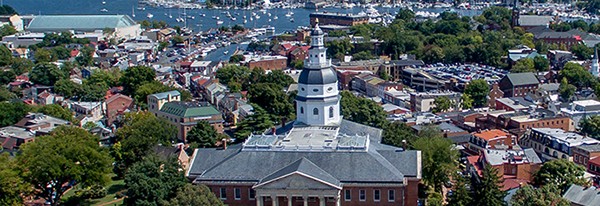Date:
Why Preservation?
My first introduction to historic preservation came in 1976 when I was a young entrepreneur on Main Street in Annapolis. Just before the grand opening, I proudly affixed the store sign to the front of the building. A few days later, I received a violation notice from the then Annapolis Historic District Commission accurately stating that I did not have approval from that body to install a sign on the building. Lesson learned. I rectified the situation by going through the appropriate process and was rewarded with the Commission’s approval.
Fast forward a few years and I found myself in Savannah, Georgia. My business on Main Street was now a thing of the past and I was looking forward to the next big adventure. As fate would have it, I encountered a person on Tybee Island beach who was also enjoying an early spring day by the ocean. As our conversation progressed, he mentioned a new art college that had just opened in downtown Savannah. Since I had an undergraduate degree in Art Education, he thought I might be a good candidate for a professorship at the college. It was a private institution, so a master’s degree was not a prerequisite for teaching there. Fortunately for me, the college was no longer hiring professors for the upcoming quarter. They did, however, hand me a brochure for the college listing all the degree programs they offered. One of those tracks was historic preservation. That new college was the Savannah College of Art and Design (SCAD). I decided to take one class, Historic Construction Technology, for the summer quarter just to see if it was a good fit. It was so much more than just a good fit, it was the beginning of a career in preservation that has lasted more than 40 years!
My first job in historic preservation came before I had even graduated from SCAD. I was hired as a draftsman in the firm of Lee Myer, Architects, a prominent preservation architect in Savannah. His firm was working with Lee Adler, a local preservationist and a member of the National Trust for Historic Preservation’s Board of Trustees. Mr. Adler was engaged in the rehabilitation of over 200 rental units in the Savannah Victorian Historic District. His intent was to transform severely deteriorated Victorian houses into low-income rental units without gentrifying existing tenants. The tenants were moved out of their apartments for the duration of the construction activities and then moved back, if not into their original apartments, into an apartment in the same vicinity. The project had the structure of a privately managed housing authority. I was fortunate enough to participate in this project and, for the first time as a fledgling preservation professional, began to understand that historic preservation was not always about just saving old buildings or regulating signage, but transforming entire communities from less than desirable into places that residents could be proud to call home. This early introduction into how preservation could be used as a tool for community and economic development also made me aware that private dollars could not support these noble activities alone. Mr. Adler was utilizing the Federal Historic Tax Credit Program, a program of the National Park Service and administered by the Georgia State Historic Preservation Office. The program provided for a 25% (later reduced to 20%) tax credit against the property owner’s passive income. This federal program alone encouraged developers to retain and rehabilitate historic commercial buildings instead of demolishing them and building new. Entire communities were saved because the federal government made historic preservation a priority incentive program.
Ironically, I found myself back in Annapolis a few years later, degree from SCAD in hand, sitting in the office of Orlando Ridout V. He was the Chief of Research, Survey and Registration for the Maryland Historical Trust (MHT). As a result of our nearly two-hour conversation, I joined the staff of the MHT in the fall of 1985. Among my responsibilities was the review of federal tax credit applications for commercial projects in every corner of the state. In 1996, the Maryland General Assembly enacted House Bill 1, which created the Maryland Historic Preservation Tax Credit Program and the Maryland Heritage Areas Programs. Both of these programs were developed based to some degree upon their counterpart federal programs. Two additions to the preservation toolbox in Maryland that would eventually assist in the transformation of both residential and commercial communities all over the state. If you observe a historic building being rehabilitated, almost without exception, the developer is participating in one or more state or federal preservation incentive programs. Maryland also provides tax credits for homeowners to help with the costs associated with improving their historic homes.
Today, all of these programs are threatened with significant reductions in funding levels or the possibility of elimination entirely. If the financial assistance these programs currently provide is reduced or eliminated, historic communities in Maryland and around the country will suffer crippling setbacks in the ongoing protection of historic buildings, residential and commercial.
Please join Historic Annapolis in making it known to your representatives in government, the importance of financial support for these programs. Whether you consider yourself a preservationist or not, the continuation of these programs will enhance the communities where you live, shop, or just visit as a tourist.
Michael Day
Executive Vice President
Historic Annapolis, Inc.


